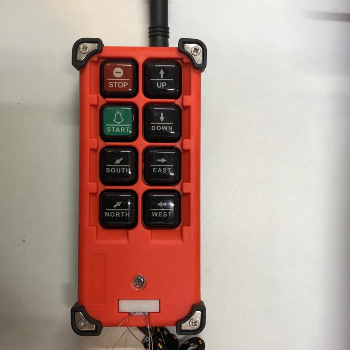In the bustling heart of India's industrial landscape, where machines hum in harmony and the air is thick with the scent of progress, efficiency is the lifeblood of success. Meet Rajesh Sharma, a seasoned operations manager at a renowned manufacturing plant in Pune. Rajesh, like many in his field, faces a daily challenge that keeps him awake at night—a challenge that a wireless crane remote switch can solve.
Rajesh oversees a team responsible for operating heavy-duty cranes that transport materials across the facility. These cranes are the backbone of the plant's operations, moving tons of materials with precision and care. However, the traditional wired controls that operate these cranes are a constant source of frustration and inefficiency. The wires often tangle, leading to unnecessary downtime, and operators are confined to a fixed position, limiting their visibility and control.
This is where the wireless crane remote switch becomes a game-changer. Imagine Rajesh's relief when he learns about this innovative solution that promises to transform the way his team operates. With a wireless crane remote switch, the operators can maneuver the cranes with ease, free from the constraints of tangled wires and limited movement. The freedom to move around and have a better line of sight enhances safety and efficiency, reducing the risk of accidents and boosting productivity.
Let's delve deeper into the story of how this transformation unfolds. One day, Rajesh receives a call from his friend, Meena, who works at a similar plant in Chennai. Meena shares how her team successfully implemented wireless crane remote switches, resulting in a 30% increase in operational efficiency. Inspired by this success, Rajesh decides to present the idea to his management team, armed with data and case studies that highlight the benefits.
During a meeting with the management, Rajesh shares a compelling vision. He illustrates how the wireless crane remote switch can eliminate the cumbersome wires that restrict operators' movements and how it provides the flexibility to operate cranes from a safe distance. He emphasizes the increased safety, as operators can now navigate tricky sections of the plant without being tethered to a fixed point, reducing the risk of accidents.
The management is intrigued but remains cautious, concerned about the investment and potential disruptions during the transition. Rajesh, however, is prepared. He presents data from various Indian companies that have made the switch, showcasing reduced maintenance costs and improved workforce morale.
One such case study involves a steel manufacturing unit in Jamshedpur, where the transition to wireless crane remote switches resulted in significant cost savings and a more engaged workforce. The operators reported feeling more empowered and less fatigued, as they no longer had to wrestle with unwieldy wires. The plant manager noted a marked decrease in downtime and an uptick in material handling efficiency.
Rajesh's passionate presentation, bolstered by these real-world examples, persuades the management to take the plunge. The transition is seamless, thanks to a dedicated team of technicians who ensure that the wireless crane remote switches are integrated smoothly into the existing operations.
The results are transformative. The operators, initially skeptical, quickly embrace the change. They appreciate the newfound mobility, which allows them to position themselves optimally, enhancing both their control and confidence. The plant witnesses a significant reduction in operational delays, and the overall morale of the workforce soars.
Rajesh's story is not unique. Across India, industries are awakening to the potential of wireless crane remote switches. They offer a practical solution to a pervasive problem, one that marries technology with human ingenuity to create safer and more efficient work environments.
In conclusion, the wireless crane remote switch is more than a piece of technology—it's a catalyst for change. For professionals like Rajesh, it represents a step towards a future where innovation drives progress, safety is paramount, and efficiency is non-negotiable. As more Indian industries embrace this change, they are not just optimizing their operations; they are paving the way for a brighter, more secure future in the heart of the industrial revolution.
Visit Vyaparify Site:
https://id.vyaparify.com/parshwanath-industrial-suppliers 
